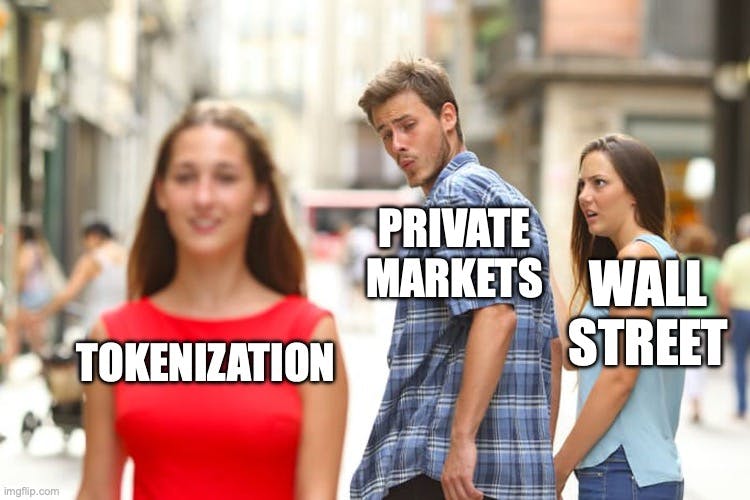For decades, private markets have been the land of the locked-up. If you invested in private equity, venture funds, or private credit, you knew one thing for certain: your money was going to be tied up for years. Liquidity was a privilege reserved for public markets, leaving trillions of dollars in private assets effectively frozen.
But that model is starting to crack. The rise of blockchain technology and the push toward tokenization are promising to make private markets look and feel more like public ones — liquid, transparent, and accessible. What was once a speculative vision is now moving into the regulatory and institutional mainstream.
The Size of the Prize
According to McKinsey, tokenized assets could represent $2 trillion by 2030, and as much as $4 trillion in an optimistic scenario. Other forecasts are even bolder: Security Token Market has projected the space could balloon toward $30 trillion.
Take real estate. Deloitte estimates tokenized real estate alone could reach $1 trillion by 2035, while tokenized loans and securitizations could surpass $2.3 trillion. Today, the numbers are still small — around $26 billion in tokenized real-world assets (RWAs) outside of stablecoins, according to RWA.xyz — but the trajectory is unmistakable.
The opportunity is clear: trillions of dollars are trapped in illiquid structures, while global capital is desperate for yield. Tokenization is the bridge that can connect the two.
Regulation: The Missing Rail Falls Into Place
For years, the biggest bottleneck wasn’t technology — it was regulation. Now, that’s starting to change in the United States.
- The GENIUS Act (2025) requires stablecoins to be fully backed by low-risk assets like U.S. dollars and gives holders super-priority in bankruptcy. It’s one of the clearest signs that Washington is willing to legitimize tokenized money as part of the system.
- The CLARITY Act expands the CFTC’s role in crypto trading — signaling a tilt toward treating certain tokenized assets as commodities rather than securities.
- The FIT21 Act, passed in 2024, laid the groundwork for digital asset markets to operate under clear jurisdictional boundaries between the SEC and CFTC.
- The SEC’s “Project Crypto”, launched in July 2025, is explicitly focused on bringing U.S. capital markets on-chain. SEC Chair Paul Atkins called it an effort to “distinguish securities from non-securities, facilitate tokenized securities, and enable DeFi super-apps.”
- Even the Federal Reserve is leaning in. Governor Michelle Bowman urged regulators to “move away from a cautious mindset” on blockchain finance, calling the GENIUS Act a pivotal step forward.
For tokenized private markets, this regulatory pivot is a turning point.
Institutions Are Already Testing the Waters
Tokenization is no longer a whitepaper idea. Citi, Wellington, and WisdomTree recently ran pilots on Avalanche’s Spruce subnet, embedding distribution rules for private funds directly into smart contracts.
These aren’t “crypto experiments.” They’re early blueprints for how trillions in private assets might eventually move on-chain.
From Wrappers to DNA
So far, most tokenization projects have been wrappers — taking an old financial structure and putting it on a blockchain. That’s useful, but not revolutionary.
The real breakthrough will be native tokenized instruments. Imagine a private credit facility or a growth financing round issued as liquid tokens from day one. Compliance is baked into the code. Secondary markets exist from inception. Settlement is near-instant.
In that world, investors no longer face decade-long lockups. Founders can access capital without waiting for rare exit events. And the illiquidity premium — the “tax” that has kept private markets inefficient — begins to dissolve.
Why This Decade Will Be Pivotal
The 2020s will be remembered as the decade private markets went liquid. Not overnight, and not without regulatory hiccups, but the trajectory is set:
-
Capital is pushing: trillions locked in private markets are demanding liquidity.
-
Infrastructure is ready: blockchains, smart contracts, and privacy layers have matured.
-
Policy is shifting: regulators are no longer just tolerating tokenization — they’re enabling it.

As Federal Reserve Governor Michelle Bowman put it:
“We need to move away from a cautious mindset on digital assets. Tokenization and blockchain-based finance will be pivotal to the modernization of U.S. markets.” n (Barron’s)
Conclusion
The transformation of private markets will not come from repackaging yesterday’s assets. It will come from designing tomorrow’s instruments — token-native, programmable, and globally liquid.
The illiquidity era is ending. What comes next will be nothing less than the reinvention of how capital moves.








